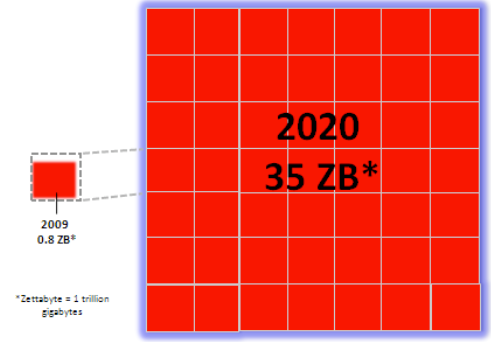The Internet and wireless communications is changing the way we learn and problem solve for the majority of humans on this planet. Today we have 2.7 billion connected through the Internet. By 2020 we will add another 3 billion, more than doubling the user community. The vast majority of these new users will access the Internet by mobile smartphones, as powerful as the desktop computer I currently use to write this blog. They will benefit from the collective knowledge already aggregated on millions of sites and gain an ability to solve problems using the social networking and collaborative learning and knowledge sharing environments that are online. I know this because every day this is what I do to research the articles I write.
Humans Started Developing Global Intelligence Thousands of Years Ago
The invention of pictorial characters and symbols to represent objects, actions and ideas is thousands of years old. It appears to have happened simultaneously in human populations all over the planet and appeared as cuneiform in Babylon, Phoenician, Greek and Latin alphabets in the Mediterranean, hieroglyphics in Egypt, Hebrew, Aramaic and later Arabic in Southwest Asia, Sanskrit in South Asia, and pictorially throughout China, Japan and Korea. Whether etched on tablets of clay, or carved into stone and cement, or inked on papyrus, sheepskin or paper, humans began gathering and sharing a body of knowledge to pass along from generation to generation.
When Gutenberg took Chinese block printing and redefined it in movable type and the printing press, modern publishing emerged. Newspapers, pamphlets, and books appeared in Europe and as European explorers reached the Western Hemisphere, soon became common throughout the Americas. The cost of preserving knowledge dropped dramatically making it much easier to assemble vast quantities of information in libraries and archives.
In the latter part of the 20th century computers turned printed words and images into digital information. Local Area Networks or LANs let users share the printed words within businesses and organizations. Then with the arrival of the Internet and search tools like Google, the knowledge dissemination paradigm changed forever. Where research in the past had me spending hours in libraries and reading journals and newspapers, today I construct a search request in natural language which yields a treasure trove of information that I can quickly scan and sort. I do this at my desktop computer, or on a laptop, a netbook, or a tablet, or on my daughter’s iPod or, on my smartphone. When I get my Internet LED TV next year I’ll even be able to do it there. For global intelligence gathering and information sharing it has never been easier.
Defining Global Intelligence
As a species we humans have developed skills for collaboration to help solve basic human needs – food, shelter, and survival in an often hostile world. Our social grouping began confined to families and then extended families and finally to tribes and villages. But knowledge sharing remained within close proximity to the owner of the knowledge. As we developed better means of survival, living longer, more of us could share experiences and pass this information long from generation to generation. As our numbers grew and organized living units got bigger we developed print and pictorial technology as a means of preserving knowledge. We developed institutional learning to share knowledge through schools and libraries. We created special knowledge keepers, librarians, who served as intermediaries between ourselves and our accumulated wisdom. We organized our knowledge, developing catalogs in which we could search on our own for the knowledge we sought. Some of my best memories of university life involved doing extensive searches for esoteric subject matter and then descending into the university stacks to pluck a rare book or primary source from where it was hidden.
But all of this collected knowledge remained accessible to only a fraction of humanity, that is until the Internet and the digital revolution. Today university libraries around the world are seeing their entire collections digitized and made accessible through web browsers.
Global Intelligence to Kick Start the Developing World
How much information sits on the Internet today? According to EMC, the storage company, we were at 1,200,000 petabytes of data as of 2010. (A petabyte is equal to a million gigabytes.) My hard drive is 1 terabyte and it currently is 30% used. So if I do the math correctly, that 1,200,000 petabytes equals 1.2 billion 1 terabyte drives. By 2020 that number is expected to grow to 35,000,000 petabytes or 35 billion 1 terabyte drives.

Not only are we witnessing a learning revolution brought to you by the creators of the Internet and delivered over smartphones to users in the Developing World, we are also seeing an explosion in knowledge creation.
Now add 3 billion new users and an environment on the Internet that encourages group think, shared problem solving, and a collective means of generating solutions to everyday and exceptional problems, and you can begin to fathom the potential growth in global intelligence.
Creating Collective Wisdom
We define intelligence as an ability to learn, reason and problem solve. When we add the Internet and social networking applications we suddenly create a forum where we can deposit vast amounts of information that becomes accessible to billions of us. In addition we can use the interactivity of the Internet to create brainstorming on a global scale. That is what collective wisdom is all about. And we accomplish this using a number of Internet tools that provide an environment for breeding:
- Collaboration and cooperation through private social networking, bulletin boards and FTP file download sites where user generated content gets stored and shared
- Swarm intelligence derived from self organization (think how a wave gets started in a football or baseball stadium, or how a movement like Arab Spring develops from a single act of desperation leading to a multiple individual responses and an entire national movement)
- Crowdsourcing to tap the creative talent and knowledge of those who can provide solutions to your problems
- Knowledge aggregation with Wikipedia the prime example, a self organizing body of knowledge that has replaced former knowledge aggregators like Britannica
- Self-paced learning through sites like Khan Academy where anyone can learn about hundreds of subjects by accessing free educational video tutorials covering math, biology, chemistry, physics, art, history, economics and finance.

















Len says: “When Gutenberg took Chinese block printing and redefined it in movable type and the printing press, modern publishing emerged. Newspapers, pamphlets, and books appeared in Europe and as European explorers reached the Western Hemisphere, soon became common throughout the Americas. The cost of preserving knowledge dropped dramatically making it much easier to assemble vast quantities of information in libraries and archives.”
This is an interesting proposition, and one that some 20 years ago I tried in vain to validate. To my surprise I discovered that the early movable type books were not significantly cheaper than the illuminated manuscripts produced in Catholic monastery scriptoriums. Even in ancient Rome, skilled slaves in scriptoriums manually reproduced scrolls that sold for about 10-cents (1993 money) per page. In 1993 booksellers offered many 400-page books that sold for over $40 (many trade paperbacks sold for $10.). The early printed books were actually intended to counterfeit manually illuminated manuscripts. This raised the cost of a printed page of text, but it also encouraged better technology for printing graphics. Registration became important. The printing press could print a standard “picture,” even a multi-colored one, much cheaper than a monk could laboriously draw one.
Obviously, prior to the printing press, the scale of markets for books was limited to the literacy of the population, which was never very high until after the Protestant Revolution in Europe. Luther might have done little to advance Christian theology, but his insistence that the pathway to heaven, and avoidance of hell, required the personal reading of the Holy Bible, not in the Roman Church’s obscure Latin language, but in the sinner’s native language, suddenly expanded the desire for literacy. The Roman Church controlled what the monastic scriptoriums where allow to produce, and there were only so many monastic scriptoriums. Suddenly, thousands of illiterate persons wanted bibles, and those persons supposed they risked the torments of hell if they didn’t read them. The Church’s monastic scriptoriums couldn’t or wouldn’t meet the demand for non-Latin Bibles. So the number of printing presses exploded, along with the number of bibles, which fueled the fires of literacy. Curiously, several centuries would pass before the literate world thought it necessary to print standard dictionaries. The person who could read the Bible in German, or French, or English, could also read history, mathematics, philosophy, engineering, physics, economics, etc. The nations with the most literate populations became the most economically productive, and the race for our modern industrial age of universal literacy began.
Len says: “•Knowledge aggregation with Wikipedia the prime example, a self organizing body of knowledge that has replaced former knowledge aggregators like Britannica”
What ironic justice both to Britannica and Microsoft. Britannica seems to have seen almost nothing. Microsoft saw a little of the future, but not much of it. Microsoft saw that printed encyclopedias would die off, so instead of wisely investing $50-million buying out declining Britannica, American Heritage, and the OED, it parsimoniously spent a couple of million buying e-publishing copyrights to Funk and Wagnalls naive encyclopedia, repackaged it, added cutsie graphics and audio, and dubbed it Encarta. Encarta never made much if any money for Microsoft (90% of the copies wound up as bundled-ware), but it killed off all the printed high school level encyclopedias.
Finally, in 2009, Microsoft gave up wasting money trying to sell a mediocre product when the world’s best one, Wikipedia, was absolutely free. Microsoft passed hundreds of billions in profits by trying to promote and sell overpriced mediocrity in standard references. Back in the 1990s, for an investment of less than $100-million, a Microsoft “reference division” could have become the world’s standard encyclopedia, dictionary, and thesaurus. The upscale reference products cold have been integrated into premium versions of MSWord and Office. What serious writer or researcher wouldn’t pay a couple hundred extra for built in OED, American Heritage, Rogets, and Britannica? It would have cost Microsoft pennies on the dollar of sales, and sales would have mushroomed. If Microsoft had done the rather obvious “right thing” in 1992, or at least by 1995, Wikipedia would have never accumulated critical mass, and it would have gone the way of oblivion like 99% of all the freeware projects. It’s just not possible to over praise Wikipedia. Now if we could just get a Wikipedia dictionary. I wonder if you have checked into trying to get the electronic version of OED, and the silly limitations that go with it? It’s destined to soon go the way of the dodo.